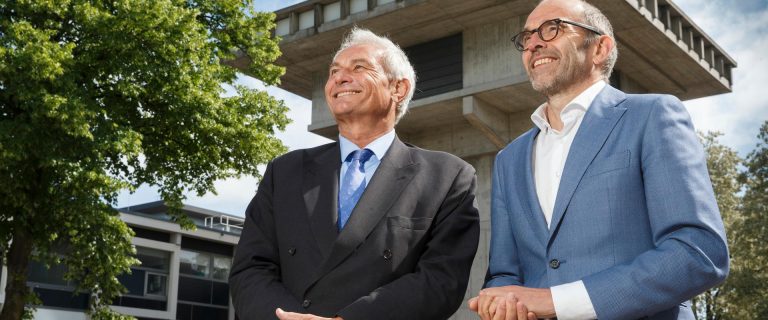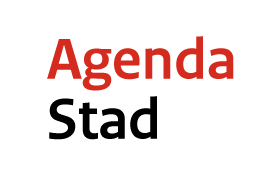Urban Agenda offers EU better view on urban challenges and solutions

“The Urban Agenda for the EU (UAEU) offers the European Union a golden opportunity, but policy makers can harness its potential even more by focusing more on experimenting”. This is the primary conclusion drawn in the research report ‘Learning to Experiment’ by the Urban Futures Studio (UFS) that was recently released. UFS Director Maarten Hajer and Special Envoy for the Urban Agenda Nicolaas Beets, offer their reflections on the reports’ findings.
The Urban Futures Studio researches existing – and explores new – forms of ‘futuring’: ways in which the future – in this case of cities – is presented and how those visualizations can influence the development of cities. With their research into the Urban Agenda, UFS researchers Suzanne Potjer and Peter Pelzer, together with director prof. dr. Maarten Hajer, offer insights into what the Urban Agenda and its ‘multilevel governance’ approach can mean for European cities and the EU as a whole.
Soufflé

Maarten Hajer
Maarten Hajer: “The Urban Agenda for the EU originates from an important agreement that seemed to arise effortlessly during the Dutch EU Presidency: the Pact of Amsterdam. In this research, we looked into how theory can help to underline the value of the Urban Agenda for the EU as an instrument for experimental multilevel governance. How does it work systematically and what are its opportunities and pitfalls? The most important threat is that the findings of European Partnerships , in which cities, Member States, the European Commission and several stakeholders work together to tackle issues such as migration, climate adaptation and urban mobility, are not put into use. And with that our research can be perceived as a warning: There is a great lingering opportunity to innovate the European Union and its legitimacy, but only if the Partnerships can deliver concrete recommendations that the European commission embraces. Otherwise this promising method could collapse like a soufflé.”
And that would be a terrible shame, Hajer argues, because this experimental form of multilevel governance is of great importance. It gathers cities as well as Member States, directorates-general of the European Commission and stakeholders at the same table on a European level to discuss thematical issues.
“Cities can learn from each other through the Partnerships . That’s what is known as ‘horizontal learning’”, Hajer explains. “Even more powerful is ‘vertical learning’, where new insights are adopted through multiple layers of government. Therein lies great potential. The European Commission does not have endless resources to develop policies and joining the Partnerships offers them the opportunity to learn valuable lessons from cities about pressing and tangible issues in urban societies. Mind you – almost eighty percent of Europeans live in urban areas, so knowledge of what goes on in those cities is of great importance to provide legitimacy to European policies.”
Added value
For Special Envoy for the Urban Agenda for the EU, Nicolaas Beets, the UFS reports primarily offers scientific support to the multilevel approach. “I am very contented with this scientific research that offers an outsiders’ analysis of our daily efforts. The reports supports my own daily experiences with Partnerships , predominantly that in the multilevel governance approach itself, that brings all parties from several layers to the table and stimulates creative efforts to reach agreement on issues and solutions, lies the added value of the Urban Agenda.”
Even if at times that value is difficult to measure. Beets: “When ideas that are put forward on the table of a Partnership are transferred to the European Commission, cities or several Member States, there is still no guarantee that those ideas materialize into recommendations. But they contribute to the lifting of barriers between the directorates-general within the European Commission, because several of them are represented in the Partnerships . And that, in itself, is a huge gain.”

Nicolaas Beets
Beets regards the Urban Agenda as an ‘extraordinarily ambitious’ concept. “So far, twelve Partnerships have been established and at least two more will follow later this year. All those Partnerships occupy themselves with the big issues that cities have to deal with now and in the next decennia. Technical experts from all layers are brought together to sink their teeth into those challenges. That offers huge potential, but, as the UFS report suggests, commitment is needed, as is clear ownership. The report suggests that some Member States bring a ‘lukewarm’ attitude to the Partnerships table and that requires attention. You need a strong coordinator and the partnership has to have commitment, vision and resources. If those requirements are met, there is no doubt in my mind that results will follow.”
“The first Action Plans from Partnerships are being translated into actions as we speak, so by the end of the year we are looking at clear results”, Beets continues. “Also, it is noticeable that results are on the agendas of partnership meetings more and more.” But that doesn’t mean that Beets promotes the suggestion that Partnerships will lead to big policy changes on the short term. “The Urban Agenda for the EU seeks a position within the EU’s long-term processes. It would sadden me greatly if in 2019 the Urban Agenda were to be weighed on tangible successes alone. We connect the top of European bureaucracy with the everyday practice in the cities. That is an ambitious effort and the UFS report offers a stimulant as well as starting points to further enhance the process, such as: how do I enhance the involvement of those ‘luke warm’ Member States?”
Inspiration
Hajer supports this view: “This process is not about political force, but about inspiration. Partnerships supply the Commission with a better view on issues that European civilians face. By acting on those signals the Commission can showcase that they are listening and working to tackle those issues. That is a world of difference compared to the early years of the European Union, where there was a tendency to improve the general quality of life indirectly through laws and policies. Now, priorities arise more bottom up through the Urban Agenda and its Partnerships and that’s what so exciting and great about it. And results can also be deduced from the way issues are discussed: if certain issues – or solutions – make their way to the discourse of the European Commission, for instance. And that is why I hope the systematics of this work method will be acknowledged.”
Beets: “It is important to realize when calling for tangible results that there is a huge difference between the Partnerships assignments. A Partnership that deals with migration is working on an urgent and pressing problem and will offer tangible suggestions for innovation, whereas a partnership that wrestles with a long term bottleneck such as air quality, does important work by concretely mapping out current issues in this area. With Partnerships like those especially, it is all about influencing.
Hajer: “When trying to achieve a break through, one should also pay attention to what we call ‘the setting of the stage’. That is: the way and shape of deliberation, however trivial this may sound, can be pivotal to the outcome. After years of fruitless discussion about utilizing the North Sea as an energy source, the decision to play a Serious game and to visualize future scenario’s in a project called ‘An Energetic Odyssey’, led to a breakthrough in European talks between the commission, energy giant CEO’s, NGO’s and knowledge institutes.”
Reinvent
“On top of that: a lot is possible if existing institutions reconsider their role”, Hajer continues. “Existing network organizations like EUROCITIES can play a much larger role in stimulating knowledge exchange between cities. In the Netherlands a new take on their role can help institutions to be innovative as well. Institutions like the VNG, the Union of Dutch Cities, and the IPO, the association of the Dutch provinces, should reinvent themselves. Currently they are aware of the innovative solutions there front running members suggest, but their fear of losing support from more conservative members, prevents them from embracing those innovations. That is what I consider an ‘old way of thinking’. If national and European umbrella organizations would develop more into learning platforms, this will enhance a new dynamic.”
Beets: “I notice the difference in energy that arises from a change in the setting of a meeting. Decision making in Europe is like building a Great Wall of China using LEGO-bricks, but sitting at the same table is a huge step forward, compared to the traditional dependency on lobbying. That’s why, as the Pact of Amsterdam celebrated its second birthday on May 30th, I am very confident that the added value of the Urban Agenda will proof itself.”
Learn more about the Urban Agenda for the EU and the European Partnerships at Futurium
